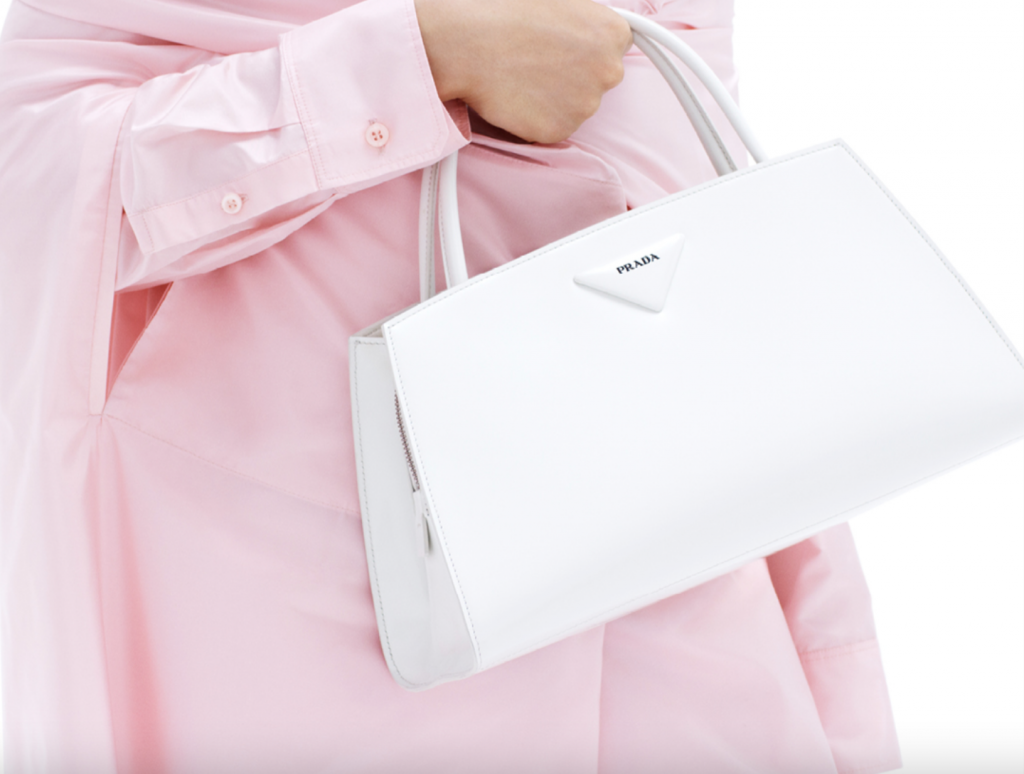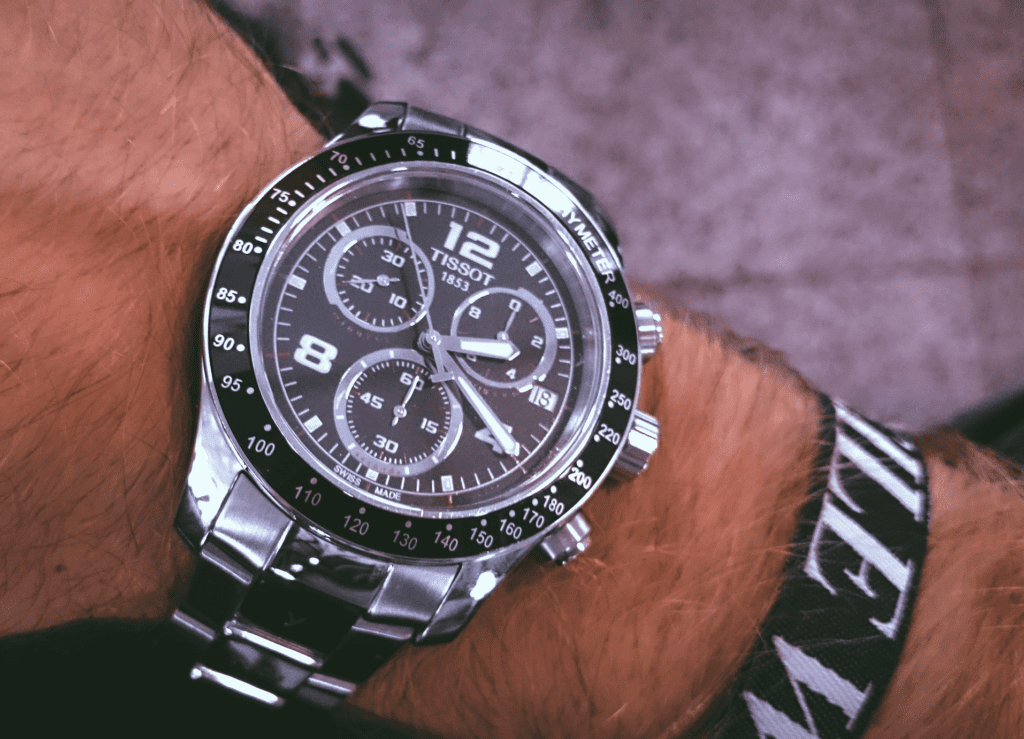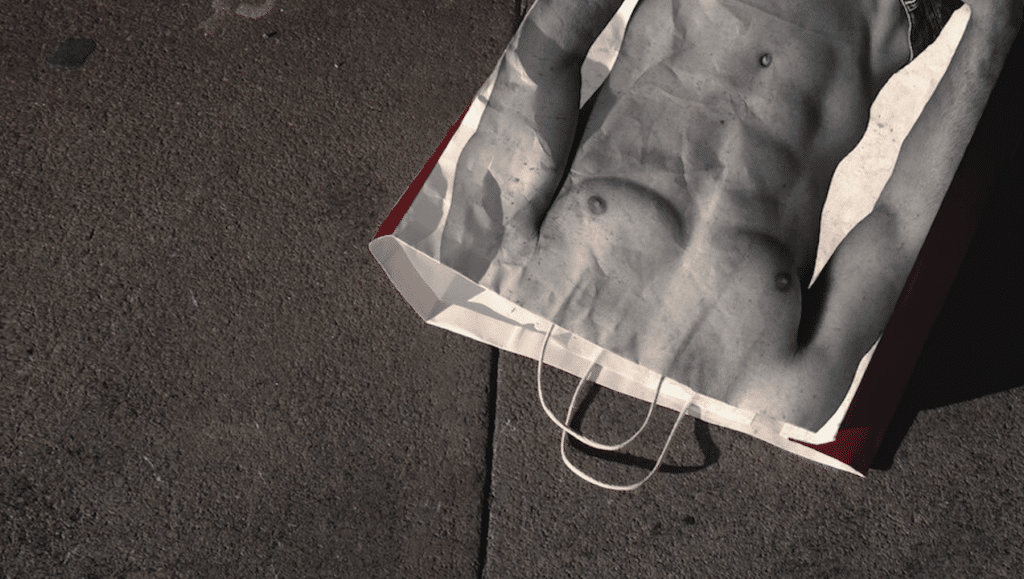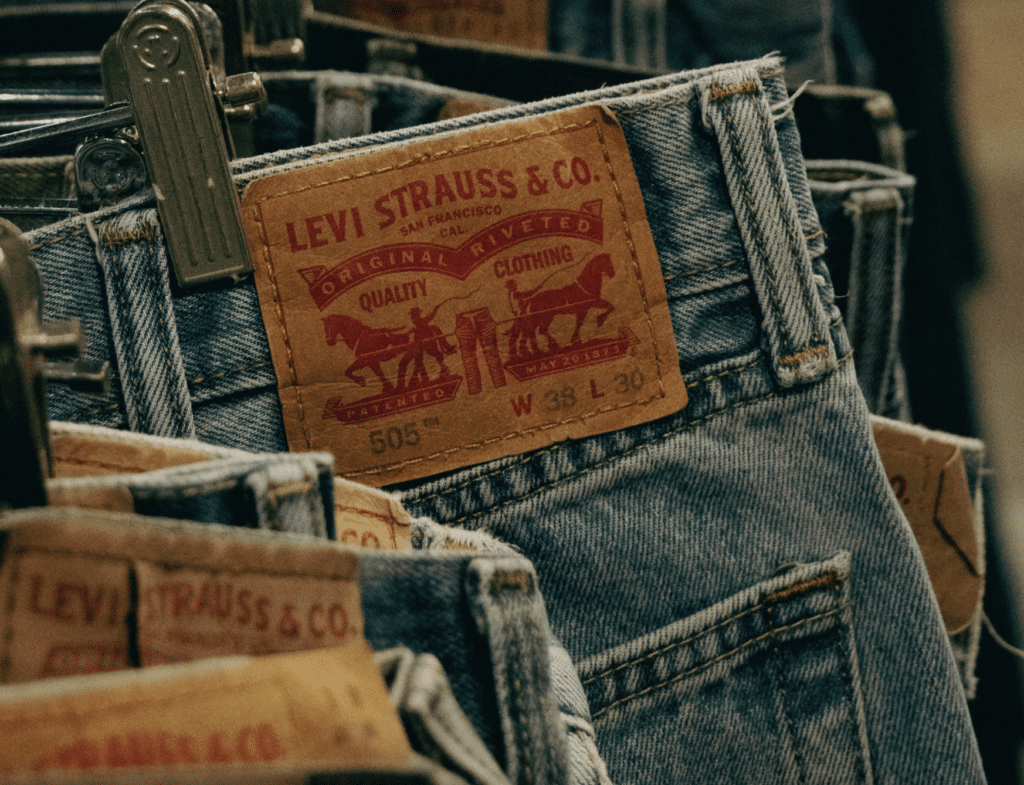Fast fashion retailer River Island is currently offering up a number of interesting pairs of sandals. It is not the style of the London-headquartered high street brand’s various footwear offerings that is noteworthy, though, considering that one is a relatively straightforward sporty slide (a la adidas’ Adilette). Instead, it is the little – but prominently placed – upside-down metallic triangle that is the most eye-catching element of the footwear, namely because it is not a stretch to assume that the little logo is a typical fast-fashion play on the upside-down triangle motif that has appeared on the offerings of Italian fashion brand Prada since at least the late 1980s.
Given that the little River Island triangle clearly bears the name of the brand inside of it (and in light of the $40 price tag associated with the sandals), consumers are not likely to confuse them with any of Prada’s products. However, the sandals come at an interesting time. To date, Prada’s uses of its logo have been largely uniform in that the flipped triangle is placed on garments and accessories – complete with the words “PRADA Milano,” along with “DAL 1913,” a nod to the found year, and a tiny coat of arms included within the bounds of the shape. With such use in mind, Prada’s rights in the mark are largely limited to the triangle with those corresponding elements at play.
Amid the “Zoom era,” Prada and other brands’ wares have been heavily – and very strategically – logo-fied. “A ‘waist-up’ focus has been noticed at both Milan and London Fashion Weeks, with detailed necklines and relaxed trousers,” the BBC reported last September. And one need not look further than Prada’s Spring/Summer 2021 runway for examples, with the brand “placing its logo near the collars of its tops, and featured large coats pulled around shoulders like a blanket.”
Much of the fashion media’s takeaways from that collection, the Milan-based brand’s first under the newly-formed creative tag-team of Miuccia Prada and Raf Simons, centered on the overt branding and its role in the so-called “Zoom era.” (Prada said at the time that it “was not inspired by Zoom,” per se, but by “the ‘contemporary human relationship with technology.'”) The New York Times’ Vanessa Friedman, for instance, noted the “oversized Prada logo triangle at the neck [of various garments] like a stamp of identity,” while The Sunday Times’ fashion director Jane McFarland stated that “the tunic tops and roll necks, with the brand’s famous triangle logo blown up and placed directly below the neckline, will certainly catch the eye of your fellow Zoomers.”
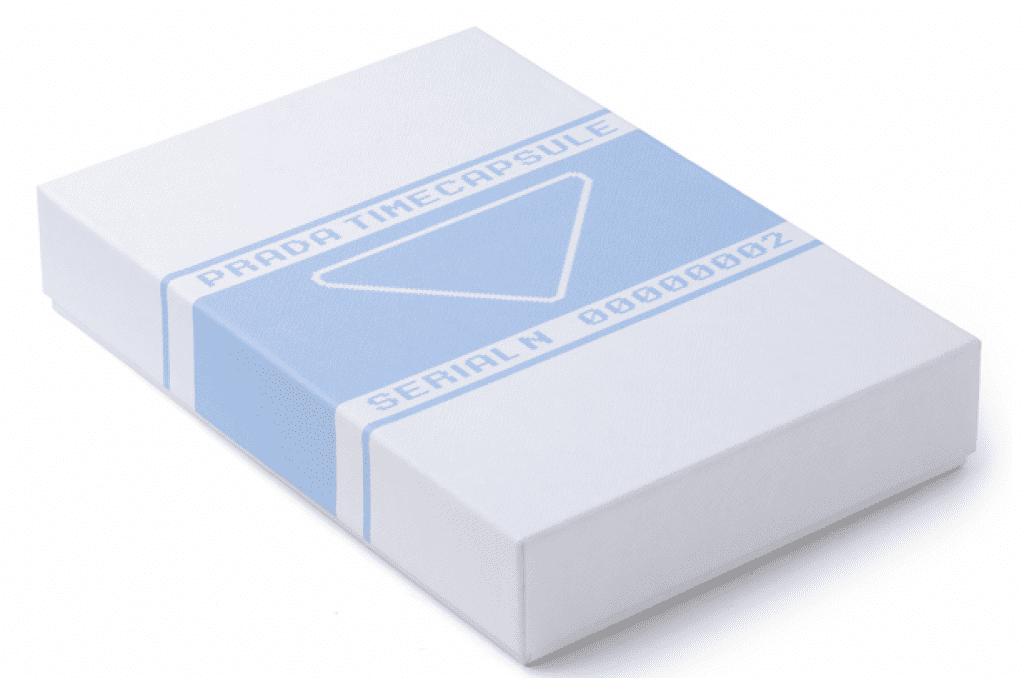
At the same time as Prada’s triangle logo has been coursing through its collections, a new(ish) trend, so to speak, has also been in the works, as well. In recent years, Prada’s use of its signature upturned triangle has been supplemented with Prada’s use of the same little triangle symbol, albeit on its own – i.e., sans the Prada name and other identifying information. An empty triangle appeared on the invitations for the brand’s Fall/Winter 2021 show, and the side of hats in one of the brand’s 2020 menswear collections, for example, and also on garments for Spring/Summer 2021. Meanwhile, these takes have made their way to retail: Peep the prominently placed triangle on this jacket, and the one on this aptly-named “triangle logo polo.” This artsy take is also interesting.
By removing the Prada name from the triangle in some cases, and putting forth a pared back version, Prada is doing something interesting: it is potentially setting itself up to enjoy more expansive rights in the little logo, and to (at least theoretically) enforce those rights against lookalike logos in instances when the “PRADA Milano,” “DAL 1913,” and the tiny coat of arms are missing from the equation. (This is a particularly relevant scenario because most big-name brands are generally well-versed in the ins-and-outs of counterfeiting and infringement (and how to do just enough escape to liability). As such, it seems unlikely that any offerings from legitimate retailers that aim to capitalize on the Prada brand would actually do so by slapping the Prada name on products. The River Island sandals appear to be an example of a brand looking to play on the appeal of Prada and elements of its well-known trademarks, and yet, remaining on the right side of the law.)
Prada has not (yet) gone so far as to try to register a standalone version of its upside-down triangle sans any text. (That, of course, does not mean that it lacks rights in the mark in jurisdictions like the U.S., where use of a mark and not registration of a mark gives rise to rights.) However, based on a handful of relatively recent trademark applications, it may be inching in that direction. In October 2019, for instance, counsel for the famed fashion brand filed an application to register an empty triangle along with the words “PRADA TIME CAPSULE SERIAL N” with the European Union Intellectual Property Office for use on everything from clothing and accessories to fragrances. The EUIPO awarded Prada a registration for the mark last year. Similarly, in 2019, it filed a number of applications with – and was subsequently granted registrations by – trademark offices in the U.S., the European Union, Australia, and Spain. The mark consists of a stylized version of its triangle along with the words “Prada Re-Nylon.” The triangle, itself, is devoid of any interior language or iconography.
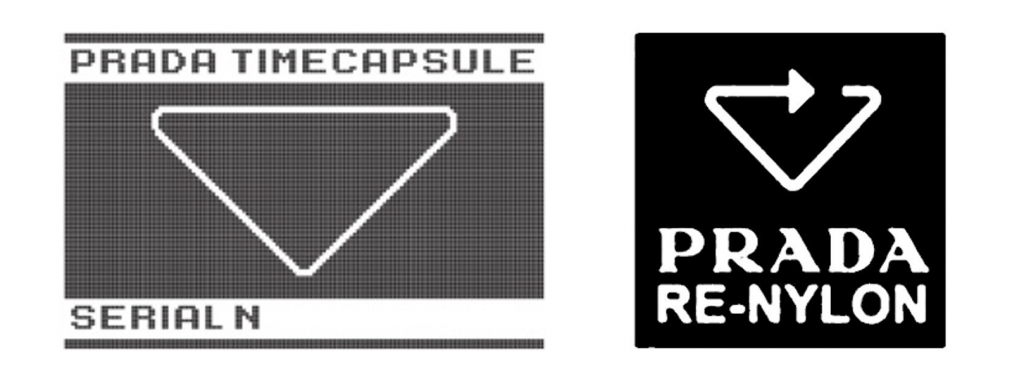
It will be interesting to see if Prada continues this course of blanding-by-logo (if you will), and ultimately, whether it seeks registrations for its upside-down triangle. Such a move would not be unheard of in more ways than one. Off-White, for example, has been filing and receiving trademark registrations for no shortage of word-less arrow trademarks, including ones that mirror the graphics that appear on shipping boxes to alert the receipt which side is the top. At the same time, such a hypothetical expansion of Prada’s rights in the triangle is a bit reminiscent of a larger trend in branding, which has seen a whole slew of consumers goods/services brands – from AOL and IBM to Burberry and Balmain – adopt pared back wordmarks, free of any stylized frills.
The impetus behind the so-called “blanding” movement has most frequently been tied to the need for assets that transition seamlessly from one medium to another in light of the rise of e-commerce and social media. At the same time, though, it could be – and has been – argued that such simple or minimal branding actually opens the door for brands to enjoy even broader rights in such marks. As London-based intellectual property lawyer Birgit Clark told TFL, brands “should always try to register a plain word trademark.” That way, she says, the distinctiveness of the mark “will rest on the word(s) rather than any stylization of those words.”
A variation on that same logic applies here, as well, at least in theory, and could enable Prada to claim rights in its upside-down triangle without any of the word elements. That would open the door to far greater protections, and with it, targets of potential enforcement – maybe even River Island. (Although, again given that the triangle features the “River Island” name, showing a likelihood of confusion could be particularly difficult.) As for whether such a hypothetical trademark application would make it through the registration process without an opposition from brands like Guess, is another matter.




